"Parents want to provide for their kids in every way. We have at least given her a portion of the ocean up to this point."
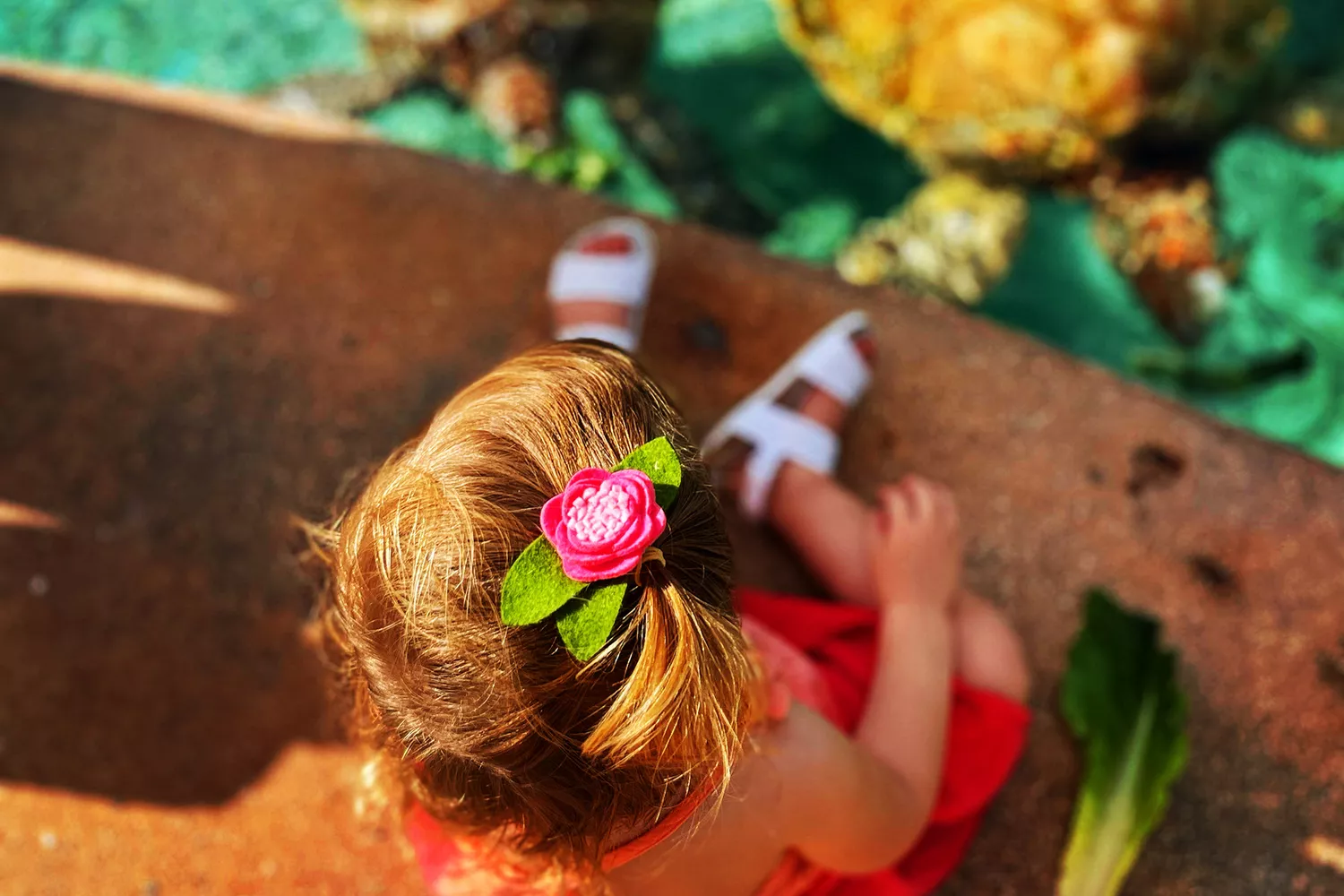
I swam toward Casuarina McKinney-Lambert, my brave guide, in the turbulent turquoise waters off the coast of Clifton Heritage Park on the Bahamian island of New Providence. (I am certain that she has mermaid ancestry.) She is the executive director of the Bahamas Reef Environmental Education Foundation (BREEF), a nonprofit organization that informs residents about preserving and repairing the nation's problematic reefs. She is a native of the nearby island of Eleuthera.
She held up her Baywatch-red lifeguard buoy and yelled above the waves, "Follow me!" while flipping her hair behind the collar of her ScubaPro rash guard.
Her aquatic classroom, a coral nursery site that welcomes 3,000 kids annually for enrichment programs, is this realm, which is home to beau Gregory damselfish, sergeant majors, parrot fish, squirrel fish, and queen angelfish dashing below us. The world's largest underwater sculpture, "Ocean Atlas," by Jason deCaires Taylor, weighs 60 tonnes and is located there. It serves as a living art exhibit and is the final stop of our be-flippered excursion.
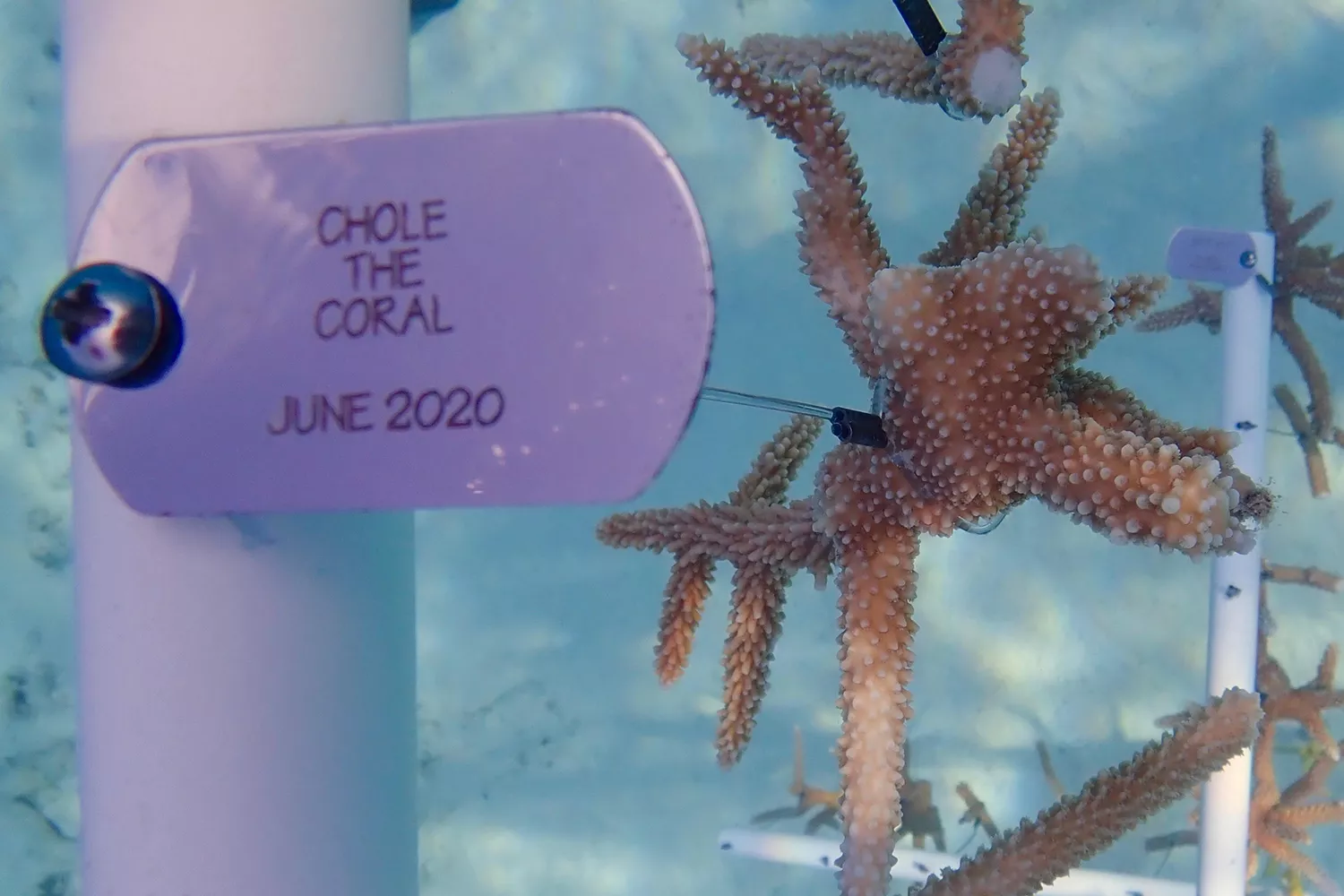
But I'm not only here as a curious art enthusiast and leisure swimmer. I've also been to look at the coral propagation facility where, for our daughter, Odella's second birthday, my wife and I acquired a staghorn coral polyp. This unique opportunity, called "Coral Reefs: A Citizen Science Program," made possible by Rosewood Baha Mar, enables travelers like me to actively participate in the crucial ecological initiatives in the area. A plaque commemorating our daughter's little coral colony will be permanently attached to the coral propagation unit, and my wife and I also had the opportunity to custom-caption it as part of this carefully designed ocean expedition.
A polyp costs $150, but for $350 or $1,000, you can adopt a coral piece or a whole coral head instead. Customers have the option of having their coral and tag placed at the adjacent Andros Great Barrier Reef, the third-largest barrier reef in the world after those in Australia and Belize, or at the BREEF Sir Nicholas Nuttall Coral Reef Sculpture Garden. According to McKinney-Lambert, it's an especially well-liked gift for holidays like Valentine's Day, anniversaries, and birthdays. I was happy to take part in this opportunity to instill in my small daughter an early knowledge of the significance of conserving the natural world since environmental conservation is something that is especially on my mind as I consider the future of my daughter on this planet.
People want to do more than just laze about on the beach and burn, according to McKinney-Lambert. "They want their children to be exposed to novel situations, fresh viewpoints, and activities that include helping others.
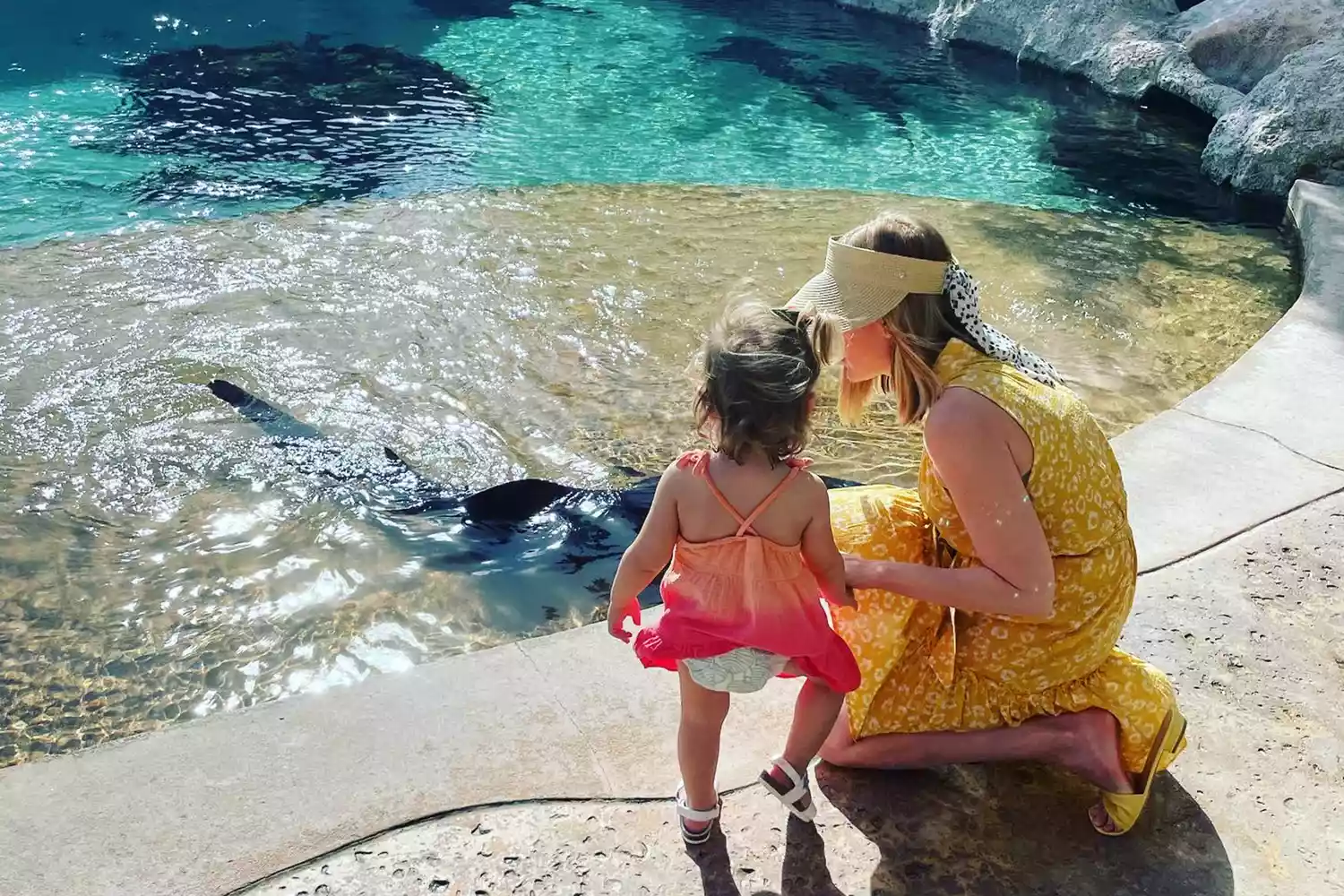
McKinney-Lambert, who grew up fishing and freediving, informed me that over her lifetime she had sawed reefs disappear and had observed the ensuing decline in fish populations as we swam toward the main sculpture and away from the beach decorated with wet sargassum seaweed.
After all, the UN's 2021 Intergovernmental Panel on Climate Change (IPCC) assessment made clear that coral reefs will still see massive die-offs even if countries were able to drastically reduce emissions and keep global temperature increases to only 1.5 degrees Celsius. And in the last 50 years, the Caribbean has seen nearly half of its corals die out compared to the vibrant reefs of the 1970s. Additionally, 80% of some species' populations have vanished, including corals with antler-like shapes like elkhorn and staghorn. Huge tracts of healthy coral have been decimated throughout the region as a result of climate change, invasive overfishing (which includes blowing reefs up with dynamite), pollution, anchor damage, and the highly contagious stony coral tissue loss disease (SCTLD). The biodiversity of the oceans and the fish and other marine animals that depend on these areas for survival are severely harmed by this. It is more difficult for coasts to withstand damage from hurricanes and other weather-related catastrophes when coral reefs disappear.
We must hasten nature's recuperation, according to McKinney-Lambert.
My goggles began to fog as we were tossed around in the whitecaps, and the salty water washed my throat. I suddenly peered below and discovered "Ocean Atlas" flashing up at me as I continued to float along and regain my bearings. The 5-meter-tall sculpture, which is based on a 13-year-old Bahamian girl, depicts a crouching, somnolent figure with a variation on the famous Greek Titan who raises the sky: the girl's enormous right hand is flat at shoulder level as if taking up the weight of the ocean. The sculpture creates an artificial reef that promotes coral growth and offers a novel environment for marine life to colonize and occupy while diverting tourists away from natural reefs. It is primarily made of pH-neutral cement, stainless steel, and basalt.
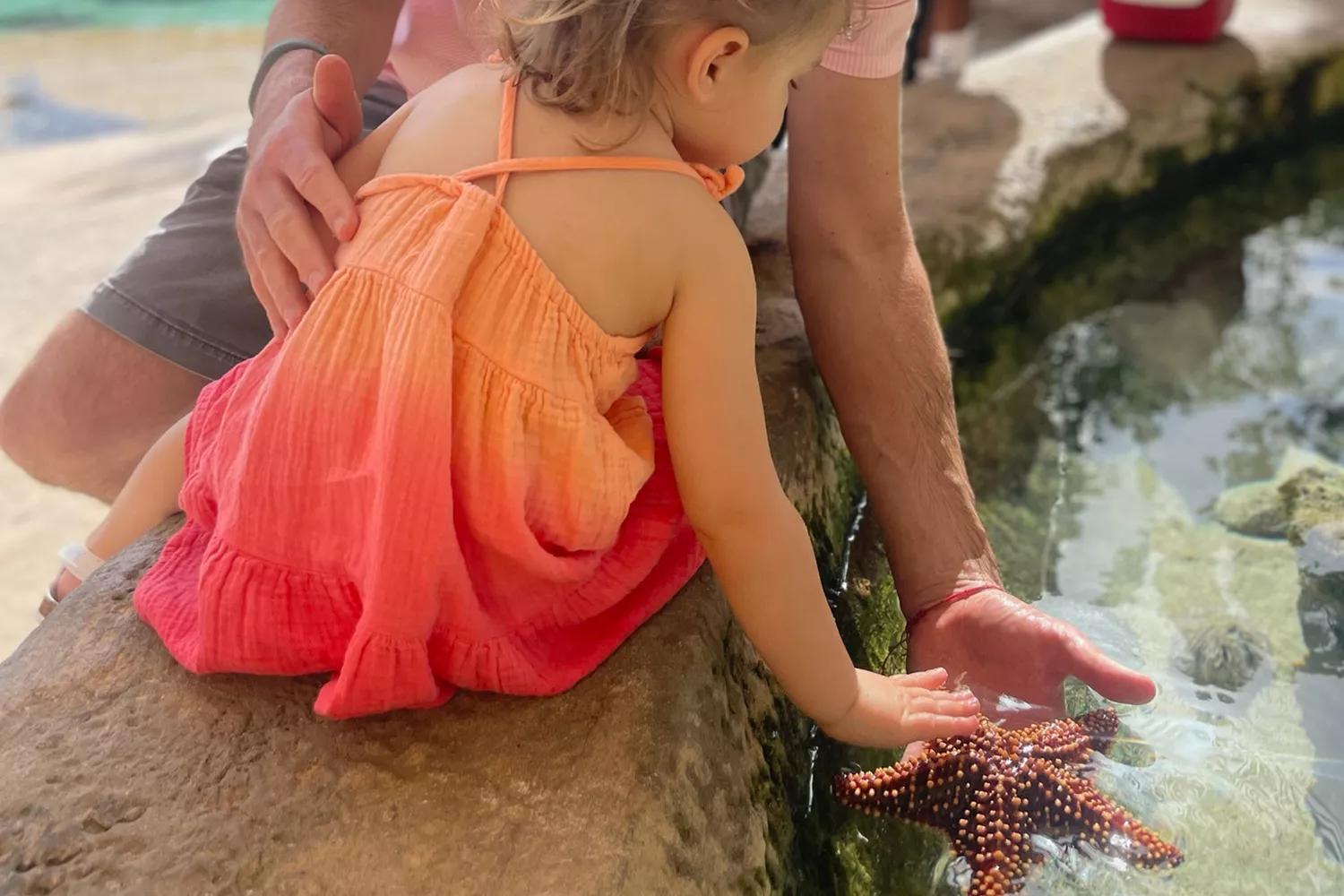
As we passed over the artwork, McKinney-Lambert remarked, "Brain coral is now growing on her brain." It seems like she has come up with a plan.
The concept, at least metaphorically, has to do with carrying the weighty responsibility of conservation.
The next generation will ultimately determine the fate of our planet's oceans, according to McKinney-Lambert. "I'm very inspired by these young people who are rising right now. The burden will fall on these young people after all of us elderly people have passed away."
Young world citizens like my daughter are given the mantle of the future by this sculpture's empowering message. The programming of BREEF aims to introduce local Bahamians to the ocean and instill in them a love of long-term conservation initiatives.
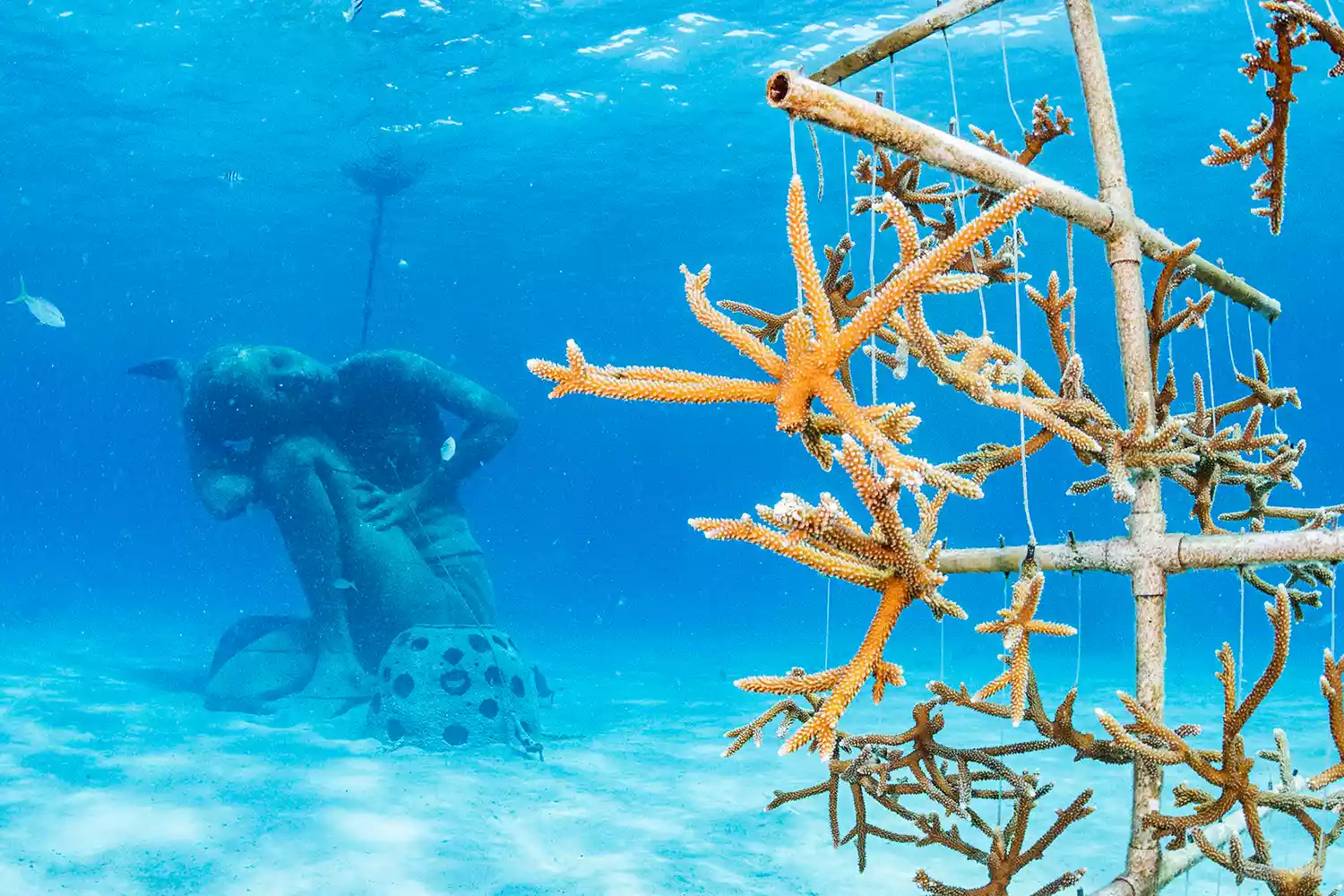
As important as it is to actively participate in coral reef conservation and gain first-hand experience in a dynamic underwater environment, there might be a hint of performativity in this kind of altruism. As sweet as the gesture was, he admits, when I mentioned the coral polyp adoption to a buddy whose spirit has long been weakened by resentment and cynicism, he bristled and didn't take to the program hook, line, and sinker.
La needed to develop a passion for the ocean back at Rosewood Baha Mar if she was to have any stake in its health. She thus took part in the recently introduced Experience Wildlife program, which is only available at Rosewood Baha Mar and is run by the Baha Bay Sanctuary. She fed green turtles, greeted stingrays and nurse sharks, and liked petting starfish, spiny sea urchins, horseshoe crabs, conchs, and sea cucumbers with lollipop-like textures in a touch tank. There were non-aquatic activities in the program, such as feeding tortoises, budgies, and Caribbean flamingos (the national bird of the Bahamas). These interactions will remain with her long after we're done shaking sand off our shoes since they gave her a love of nature and, in particular, an early love of the ocean and its people.
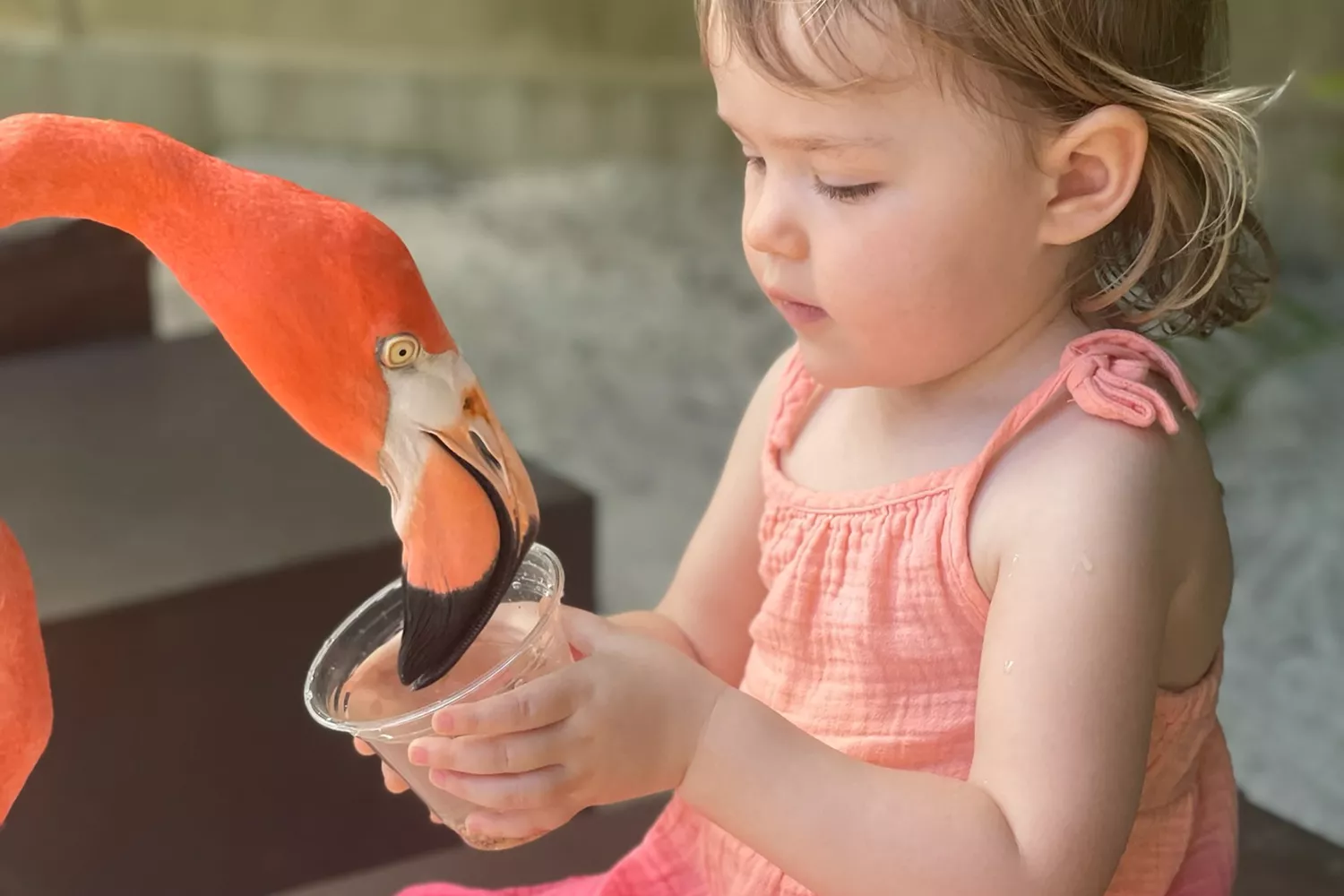
We'll receive a photo update of the coral polyp when Odella is two and a half years old, which will be in six months. The staghorn coral will continue to develop, be pruned, and be replanted on the reef every year. Parents desire to provide for their kids in every way. We have at least given her a portion of the ocean up to this point."

